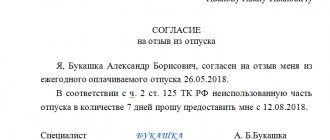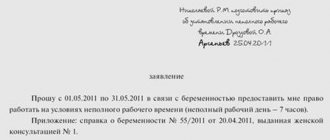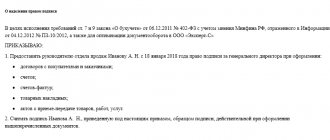Determining the category of severity of work performed
The above-mentioned states of the body are manifested in physical and mental labor.
Moreover, this applies to favorable and unfavorable areas. In production conditions, depending on factors, one condition may predominate. Therefore, they are used to determine the category of work severity. Working conditions are based on an analysis of the work environment within which the activity is performed. There are 3 human states that affect the quality of work and health: normal, borderline, pathological. All categories of severity of work performed have their own characteristics, since each is characterized by certain characteristics.
Functions of the severity of labor when passing the ITU
A specific category of severity of work performed for ITU is assigned under the supervision of specialists. If you have certain types of illnesses, exercise is prohibited, or only limited, otherwise it can cause harm to human health.
The category of severity of work performed for VTEK is approved on the basis of the actions and costs required for the work. Often, additional costs deplete the body. Many diseases cause physical suffering to a person, which is why pain syndrome develops.
Category of work by severity (GOST -88)
mental activity is determined mainly by the participation in the labor process of the central nervous system and sensory organs. During mental work, the heart rate decreases, blood pressure increases, metabolic processes are weakened, the supply of blood to the extremities and abdominal cavity decreases, at the same time, the flow of blood to the brain increases (8 to 10 times compared to the resting state). Mental activity is very closely related to the work of the senses, primarily the organs of vision and hearing. Compared with physical activity, in certain types of mental activity (the work of designers, computer operators, students and teachers), the tension of the senses increases by 5–10 times. This predetermines more stringent requirements for the regulation of noise, vibration, and illumination levels specifically during mental activity.
Category III includes work associated with constant movement, moving and carrying significant (more than 10 kg) weights and requiring significant physical effort (a number of professions involving manual operations in metallurgical, engineering, and mining enterprises).
Indicators of the severity of the process
These include:
- Dynamic physical activity.
- The weight of the load being moved or lifted.
- A set of stereotypical labor movements.
- Static load volume.
- The position in which the work is performed.
- Movements in space.
Labor intensity characterizes the labor process. The concept also projects a load on the central nervous system, emotional area and sensory organs.
Categories of labor severity
Fifth - work in which, as a result of very unfavorable working conditions, at the end of the working period, reactions are formed that are characteristic of the pathological functional state of the body in practically healthy people, disappearing in most workers after proper rest. However, in some individuals they can develop into work-related and occupational diseases.
The fourth is work in which exposure to unfavorable factors leads to the formation of a deeper borderline state in practically healthy people. Most physiological indicators deteriorate, especially at the end of working periods (shifts, weeks). Typical production-related conditions of pre-disease, etc., appear.
The severity and intensity of work: classification, indicators, factors
Neuro-emotional stress is characterized depending on the load and density of the work schedule, the number of actions performed, the complexity and volume of information to be absorbed, and the time spent on the operation.
The harmful effects on the worker’s body are determined by factors in the working environment. Occupational hygiene identifies two main factors – harmful and dangerous. Hazardous is a factor of the severity and intensity of work that can cause an acute illness or a sharp deterioration in an employee’s health indicators or death. A harmful factor can, in the process of work and in the combination of certain conditions, cause an occupational disease, a decrease in performance of a temporary or chronic nature, increase the number of infectious and somatic pathologies and lead to problems in reproductive function.
How to determine the category of severity of work performed for VTEK
A production characteristic for an employee is a form that is drawn up by the administration of the enterprise upon request, and a production characteristic for an employee for VTEK is issued to the employee to provide information at the place of request. Production characteristics: sample and types of forms Based on the variety of information that needs to be provided to a particular department, the sample production characteristics differ in the form of compilation: 1. The most common option is to use the production characteristics as an official document that lists professional skills and personal qualities , as well as the public position of the employee. This type of document is called a reference from the place of work.2. The information necessary to establish the degree of disability when assigning a disability group, or to make a comprehensive expert assessment of the patient, is compiled in the form of a production characteristic.
Hygienic standards for working conditions MPC. MPL - levels of working environment factors that, when working daily except weekends for 8 hours, but not more than 40 hours per week, during the entire working experience, should not cause diseases or deviations in health, detected by modern research methods, in the process of work or in distant periods of life of the present and subsequent generations. Statistics Blog articles: 16381 People on the site: 11 working conditions characteristics form Author: POST Date: 2013-01-02 To save the working conditions characteristics form file, follow the link I attached below. Whether to close the sick leave in your situation or to extend it is decided only by the attending doctors of the clinic, it does not depend on the MSE. The degree of functional disorders is determined according to the classification of dysfunctions of the body into four degrees of severity: - 1st degree - minor dysfunctions; — 2nd degree — moderate dysfunction; — 3rd degree — severe dysfunction; — 4th degree — significantly pronounced dysfunction. Labor intensity is a characteristic of the labor process, reflecting the load primarily on the central nervous system, sensory organs, emotional sphere of the employee and the degree of its severity. As a rule, in many professions there is a combination of several unfavorable factors that have a negative impact on the course of the disease in a working person. Working conditions are characterized by a number of indicators of the severity of work - this is the working position and posture, predominant stay on the legs, frequent bending of the body, the pace of production operations, body shaking under the influence of vibration, meteorological conditions, all types of radiation, contact with toxic substances, the presence of occupational hazards and etc. Types of mental work Mental work includes work related to the reception and processing of information, the implementation of which requires significant stress on the sensory apparatus, attention, memory, activation of thinking and the emotional sphere. Has it occurred in the last 12 months? All types of radiation: ionizing radiation, laser radiation, magnetic field, insolation. exposure to static electricity, electric field. Approved by the Decree of the Government of the Russian Federation of December 15, 2000. Factors of the labor process that characterize the severity of physical labor. The rating increases for activity on the site. Creative work: scientists, writers, composers, actors, painters, architects, designers.
We recommend reading: How to calculate payment for idle time from salary
Additional features of working conditions
The conditions in which a person works and their severity can be determined by a number of indicators, namely:
1. Posture and body position when performing work. This indicator is divided into the following types:
- Horizontal body position. This includes high-altitude assemblers, welders, mining workers, etc.
- Half-bent or flexed position. In this case, it is necessary to clarify the temporary stay in this position as a percentage of the total working time.
- Same type of movements. The number of movements of the same type that an employee makes per shift is calculated. Not only the local load is taken into account, but also the regional one.
2. Time on your feet. To classify working conditions as severe, this condition must be constant and include not only static standing in an upright position, but also walking.
3. Tilts of the body. Typical for agricultural workers during harvesting, weeding, as well as on dairy farms and construction sites when laying floors and cladding walls. In this case, the number of bends during a shift is specified.
4. The pace at which the required actions are performed. This includes work on semi-automatic machines, conveyors and weaving.
5. Operating mode. Typically, difficult working conditions include shift work schedules or shift work, night shifts and frequent changes in the rhythm of life.
6. Exposure to vibration. The influence can be not only general, but also local. Tractor drivers, combine operators, choppers, bulldozer operators, as well as railway and urban transport employees are exposed to vibrations.
7. Meteorological working conditions. Abnormally low or high temperature operating conditions, high humidity or sudden changes, air speed and drafts.
8. Exposure to radiation of any kind. This may be a magnetic field, laser or ionizing radiation, insolation, the influence of static electricity and electric fields.
9. Interaction with toxins, namely poisons and other substances harmful to humans.
10. Professional malicious features.
11. Polluted air in the workplace, high levels of noise and atmospheric pressure.
12. Quite often, in one profession there are several factors at once, according to which working conditions can be classified as difficult.
How to determine the category of severity of work performed for VTEK
— The first floor of the building where the Passage store is located today was occupied by the TUSUR library (well, at least I know this, I thought with relief: in the 90s this room was given over to a store), when it was moved, they occupied the space of our sports department.
Heavy physical work (category III)
characterized by an energy consumption intensity of more than 290 W (more than 250 kcal/hour).
These are jobs associated with constant movement, moving and carrying significant weights (over 10 kg) and requiring great physical effort ( loaders, blacksmiths, foundry workers,
etc.)
Category of severity of work performed in the production characteristics form
At the request of the doctor, you can request a production characteristic at work. The basis for issuance is a statement. In general, the document indicates an assessment of the conditions of the labor process. Based on the medical examination, specialists decide on the employee’s suitability to hold this position. With the document, the citizen returns to the clinic, where a conclusion is made about his state of health.
- dynamic load;
- what is the maximum weight of cargo moved during a work shift;
- stereotypical movements when performing production tasks;
- how much work is being done;
- what working posture is recorded for the employee when performing a shift assignment;
- about movements in the workspace.
How to determine the category of severity of work performed for VTEK
Static
load is the effort on a person’s muscles without moving the body or its individual parts.
The magnitude of the static load is determined by the product of the force magnitude and the maintenance time
in kg/s (in the case of different magnitudes of forces, the maintenance time of each of them is determined separately, the products of the force magnitude and the maintenance time are found and then these products are summed).
2. relatively uncomfortable
working conditions, when exposed for a certain period of time, provide a given performance and preservation of health, but cause subjective sensations and functional changes that do not go beyond the norm;
Enter the site
RSS Print
Category : Occupational safety Replies : 5
You can add a topic to your favorites list and subscribe to email notifications.
« First ← Prev.1 Next → Latest (1) »
| Ekaterina (guest) [email protected] | |
| Tell me how to find out what category of work my work belongs to? The fact is that my director prohibits going out for smoke breaks, which occur approximately once every hour and a half. I work as a technical editor for a website, which means I spend the entire working day - from 9:00 to 18:00 (and sometimes later) - at the computer. The “Inter-industry standard instructions for labor protection when working with a PC” talks about mandatory technical breaks, but there is a division into categories of work - which of them can my work be classified as? Thank you | |
| I want to draw the moderator's attention to this message because: Notification is being sent... |
| Yikh [email hidden] Wrote 3198 messages Write a private message Reputation: 304 | #2[101888] August 5, 2009, 2:41 pm |
Notification is being sent...
Allahu Akbar!| Faith [email hidden] Belarus, Minsk Wrote 331 messages Write a private message Reputation: | #3[101893] August 5, 2009, 3:47 pm |
Notification is being sent...
| hazhieva-raushan [email hidden] Wrote 1 message Write a private message Reputation: | #4[326204] November 13, 2011, 20:21 |
Notification is being sent...
| Olga Nikolaevna [email hidden] Belarus, Grodno Wrote 3034 messages Write a private message Reputation: 574 | #5[326206] November 13, 2011, 20:49 |
I want to draw the moderator's attention to this message because:Quote:
workplace certification
Notification is being sent...
| msvsl [email hidden] Wrote 108 messages Write a private message Reputation: | #6[329686] November 26, 2011, 21:39 |
Notification is being sent...
« First ← Prev.1 Next → Latest (1) »
In order to reply to this topic, you must log in or register.
Category of severity of work performed for MSE
Therefore, its implementation allows you to normalize any type of work. Exercises are part of training that, through repetition, restore performance in various activities. Determination of the category of severity of work performed Medical and physiological studies have substantiated six categories of severity of labor: I category of severity of labor is a type of activity performed in optimal conditions of a production environment with favorable values of physical, mental and neuro-emotional stress. Under such conditions, a person maintains health and performance. Category of severity of work performed for MSE Third - work is performed under conditions in which practically healthy people experience reactions characteristic of a borderline state of the body. There is a slight decline in production indicators. Improving working and rest conditions eliminates negative consequences relatively quickly. Categories of severity of work 1. The first category of severity includes work performed in comfortable conditions of the external production environment with permissible values of physical, mental and neuro-emotional stress.
A sample of filling out a production characteristic for VTEC. An employee needs a production characteristic if he is undergoing an examination by the ITU medical and social examination to obtain a disability group. The responsibility for filling it out falls on the employer, who does not have the right to refuse to provide the employee with this document. The production characteristics for ITU, the form and an example of how to fill it out can be seen below. How to fill out a production characteristic for ITU A sample of this document is usually provided to the employee by ITU employees along with a list of required documents. The employer only has to fill out the production characteristics form for the ITU.
Categories of labor severity for VTEK
After establishing the diagnosis of the disease, the degree of impairment of body functions and disability, medical and social examination specialists decide on the advisability of transferring the employee to a lighter work activity or a complete ban on any professional activity.
ITU specialists, when deciding whether to grant disability, pay attention only to severe forms of this disease: with severe and constant pain, a hidden paroxysmal course, chronic recurrent pancreatitis, with cystic formations.
Determining the category of severity of work performed
- type of work carried out in a normal environment with favorable physical, mental and neuro-emotional stress: in this case, the employee’s health and performance are preserved;
- assumes that environmental conditions comply with hygienic standards: in this case, conditions are observed to comply with acceptable production factors;
- with this type of work, the muscular, neuro-emotional state deteriorates due to not entirely favorable working conditions;
- this includes work performed in unfavorable conditions, which causes the onset of a pathological condition;
- a person performs work that causes pathological reactions to appear under the influence of negative conditions;
- such reactions occur after the start of a work period, for example a shift.
To prevent fatigue and improve performance, you need to use simple exercises and training. Whatever the categories of severity of the work performed, GOST includes the need to carry out simple measures.
How to determine the fire safety category of a room
All operated premises are divided into five types according to the degree of potential danger. They are determined by the gases, liquids or materials inside, as well as the technologies used in the case of industrial buildings. Below is a table of fire safety room categories containing descriptions and some examples of each.
| Room category | Basic characteristics and properties of gases, liquids and materials used or located in the premises in question | Example of a room |
| Category “A” - premises with increased fire and explosion hazard | Gases classified as flammable and flammable liquids (flammable liquids), which ignite with a flash point of up to 28 degrees. This results in a dangerous mixture that explodes when ignited with an outlet pressure of more than 5 kPa |
|
| Category "B" - premises classified as explosive and fire hazardous | Combustible fibers or dusts, flammable liquids with a flash point of more than 28 degrees, other flammable liquids that can form a dangerous mixture that explodes when ignited with an outlet pressure of more than 5 kPa |
|
| Categories “B1-B4” – Premises classified as fire hazardous | Low-flammable and flammable liquids and solids, as well as materials (including fibers and dusts), ordinary substances and materials that, when mixed under natural conditions, only burn, provided that the premises in question do not belong to the categories “A” or “B” described above » |
|
| Category "G" - premises of moderate fire hazard | Various substances classified as non-flammable, as well as those in a red-hot, hot or molten state, required by the conditions of the technological processes used. In this case, the processing or production of the final product involves the combustion or disposal of solids or liquids, as well as gases used as fuel |
|
| Category "D" - premises of reduced fire hazard | Various substances and materials that are non-flammable and are in the process of processing or cold storage |
|
The table above shows the category for explosion and fire safety of premises, its description, as well as relevant examples. They help to understand exactly how the classification is carried out according to such an important criterion.
Determining the fire safety category of a premises must be carried out by any business entity. Its result is reflected in the corresponding declaration drawn up upon commissioning of a constructed or reconstructed facility.
Work severity category
Creative work is the most complex form of labor activity, requiring a significant amount of memory and attention, which increases neuro-emotional stress. This is the work of teachers, programmers, designers, scientists, writers, composers, artists, painters, architects, constructors. The work of teachers, trade and medical workers, and workers in all service sectors is characterized by constant contact with people, increased responsibility, and often a lack of time and information to make the right decision, which causes a high degree of neuro-emotional stress. The work of pupils and students is a strain on basic mental functions, such as memory, attention, perception; presence of stressful situations (exams, tests). The successful implementation of various forms of human labor activity is possible with mandatory consideration of the physiological foundations of mental and physical labor, the implementation of necessary measures to increase the body’s performance, and the creation of comfortable conditions for work teams and individual workers.
Particular attention should be paid to those sections that indicate difficulties in performing certain loads (for example, paragraph 8). It must be taken into account that it is important to display the actual volume of work completed, and what percentage is being completed.
Samples of characteristics of working conditions for VTEK
Such documentation is mainly carried out in free form and, without a doubt, should include the employee’s personal indicators, a general opinion about work activity (qualified), an assessment of professional characteristics and performance. There are often situations when such a document is required for a student at a higher educational institution after an internship at an enterprise.
- Average difficulty of work (category IIb). It corresponds to jobs that involve walking and carrying heavy objects weighing up to 10 kg. Energy consumption from 232 to 290 J/s.
- Heavy physical work (category III). This category includes work that is characterized by systematic overexertion, as well as carrying heavy objects weighing more than 10 kg. Energy costs for such work exceed 290 J/s.
Sociology of labor
Definition 1
Labor sociology is one of the branches of sociological science. The subject of study of the sociology of labor is labor as a social and economic phenomenon. Also in the field of vision of researchers in the field of sociology of labor are social relations that connect participants in the labor process within the framework of labor activity.
The basic concepts that the sociology of labor includes are the content of labor, its nature, conditions and forms of labor. There are two main forms of labor:
- Collective form of work - implemented within one team, fully concentrated on the results of the work of several people, affects the lives of everyone and must meet the goals of the organization;
- Individual form of labor - in this case, a person independently carries out labor activities to satisfy his own needs. Can get around without strangers; the interference of other people already interferes with the implementation of purely individual labor activity.
Finished works on a similar topic
- Course work Categories of sociology of labor 410 rub.
- Abstract Categories of labor sociology 230 rub.
- Test work Categories of sociology of labor 240 rub.
Receive completed work or specialist advice on your educational project Find out the cost
Along with the objective characteristics that the sociology of labor studies, researchers also note an interest in the employee’s attitude to the subject of labor, the process of implementing labor activity and the results of labor. This attitude is reflected precisely in those indicators that characterize the following aspects:
- Satisfaction with one's own work activity;
- Attitudes and value guidelines that a person follows in the implementation of his work activity;
- Relations between workers or certain separate groups, which include workers of different ranks and categories.
Labor, as well as labor activity, is always carried out under certain conditions, which are determined both socially and economically. They are connected with one or another socio-professional group that implements the activity, and with the group whose interests and needs are satisfied.
The sociology of labor emerged at the turn of the 19th and 20th centuries. The foundations of both theoretical and practical nature were laid by F. Taylor, then developed by such famous authors as E. Mayo, A.K. Gastev. Thus, the theoretical and methodological foundations are reflected both in the works of foreign researchers and in the works of famous domestic sociologists.
Too lazy to read?
Ask a question to the experts and get an answer within 15 minutes!
Ask a Question
Categories of work by severity
Factors characterizing labor intensity include: intellectual, sensory, emotional stress, the degree of monotony of workload, and work mode. The intensity of work depends on the severity of the work, as well as on the individual characteristics of the person.
2. Sanitary and organizational measures (sealing, insulation, shelter, shielding of equipment, ventilation, heating, sewerage, drinking water supply, sanitary facilities, industrial gymnastics, functional music, rationalization of work and rest).











